Fish-eye ice cream is not a stunt. Two Australian chefs get real on sustainability
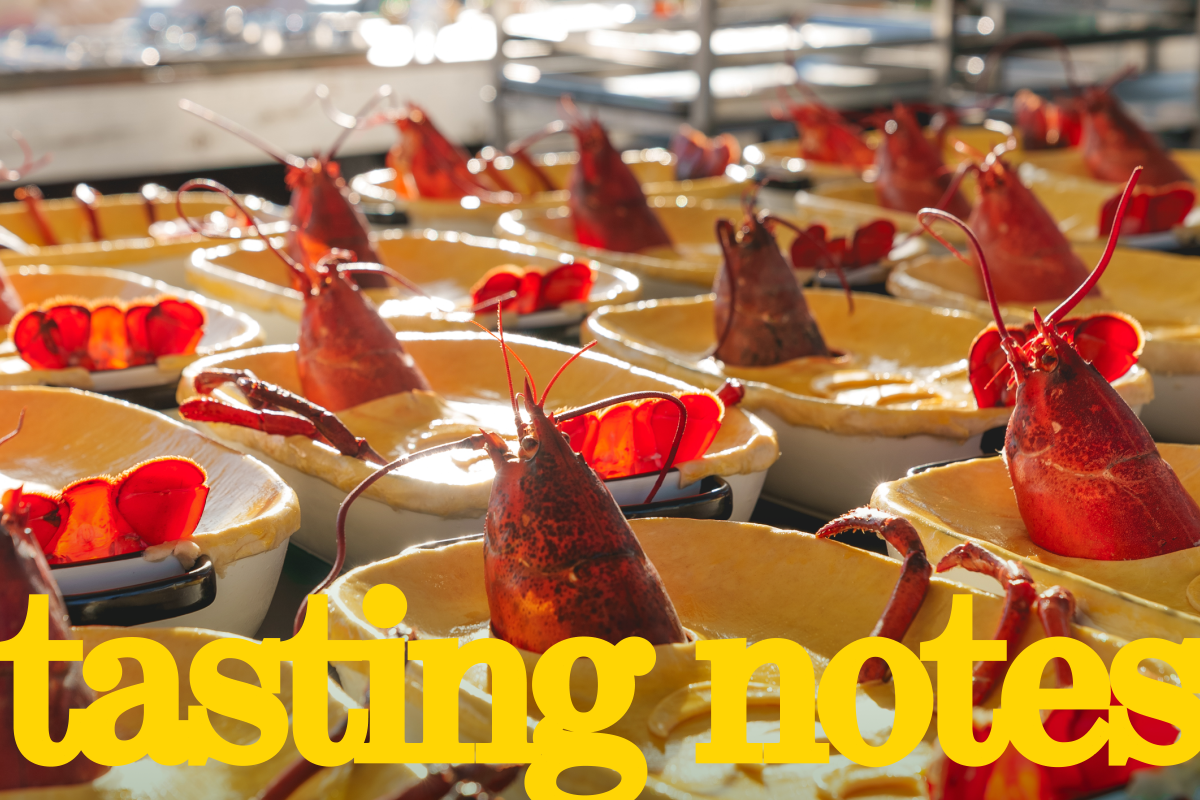
Australians in Malibu, cookbook season, the chili crunch debate gets crispy and are flat croissants a pastry abomination? I’m Laurie Ochoa, general manager of L.A. Times Food, with this week’s Tasting Notes.
Fish for dessert
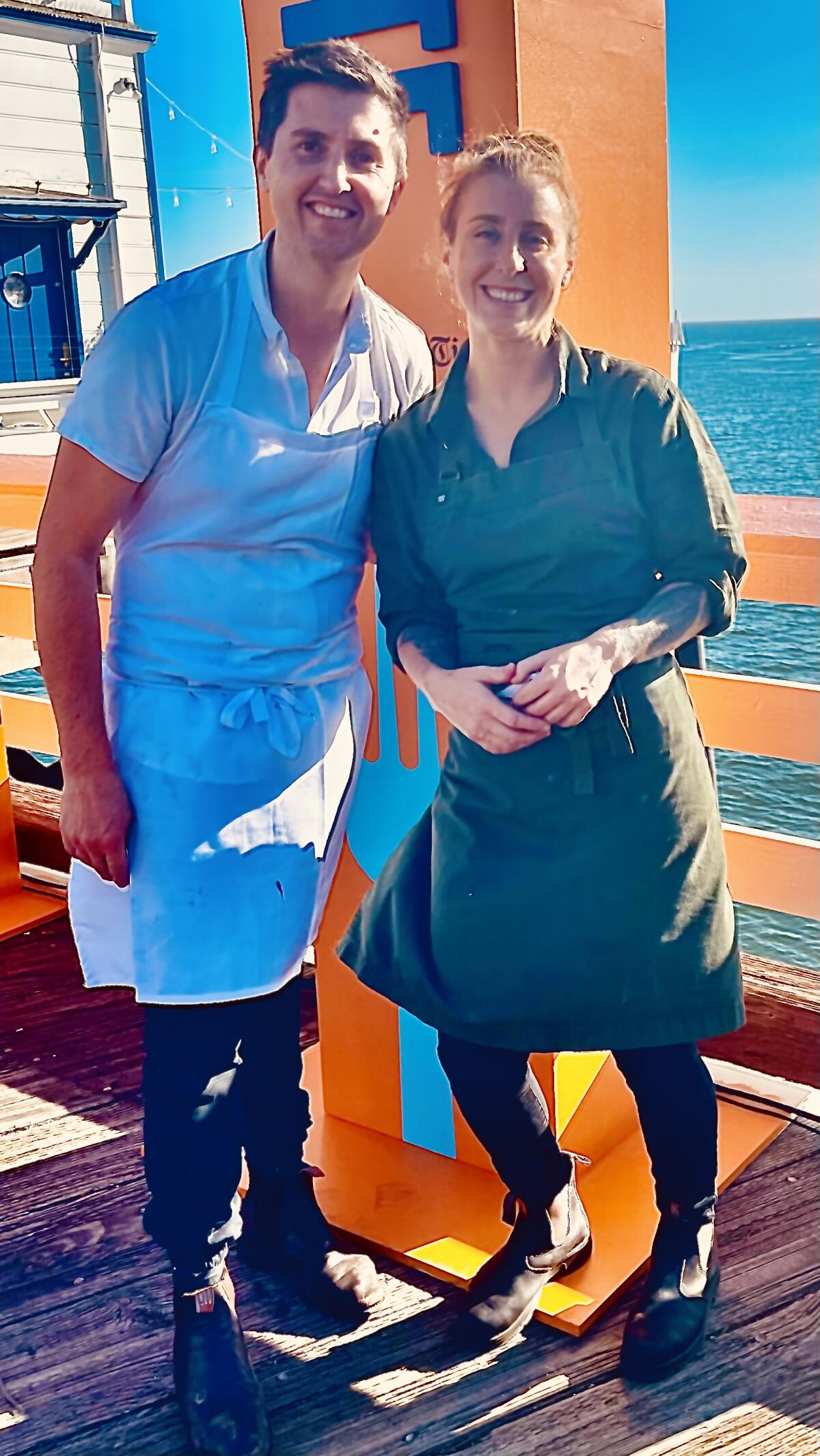
The guests on the Malibu Pier before sunset Wednesday evening gathered around two award-winning chefs, Josh Niland and Jo Barrett, who had come from Australia to collaborate on a dinner for 300. The drinks-and-passed-appetizer hour of the L.A. Times Great Australian Bite — with South Australian wines and Four Pillars gin cocktails plus fresh oysters, tahini-sauced venison kofta, lamb sausage rolls and grilled cabbage skewers with ginger and black vinegar — was about to ease into the sit-down dinner.
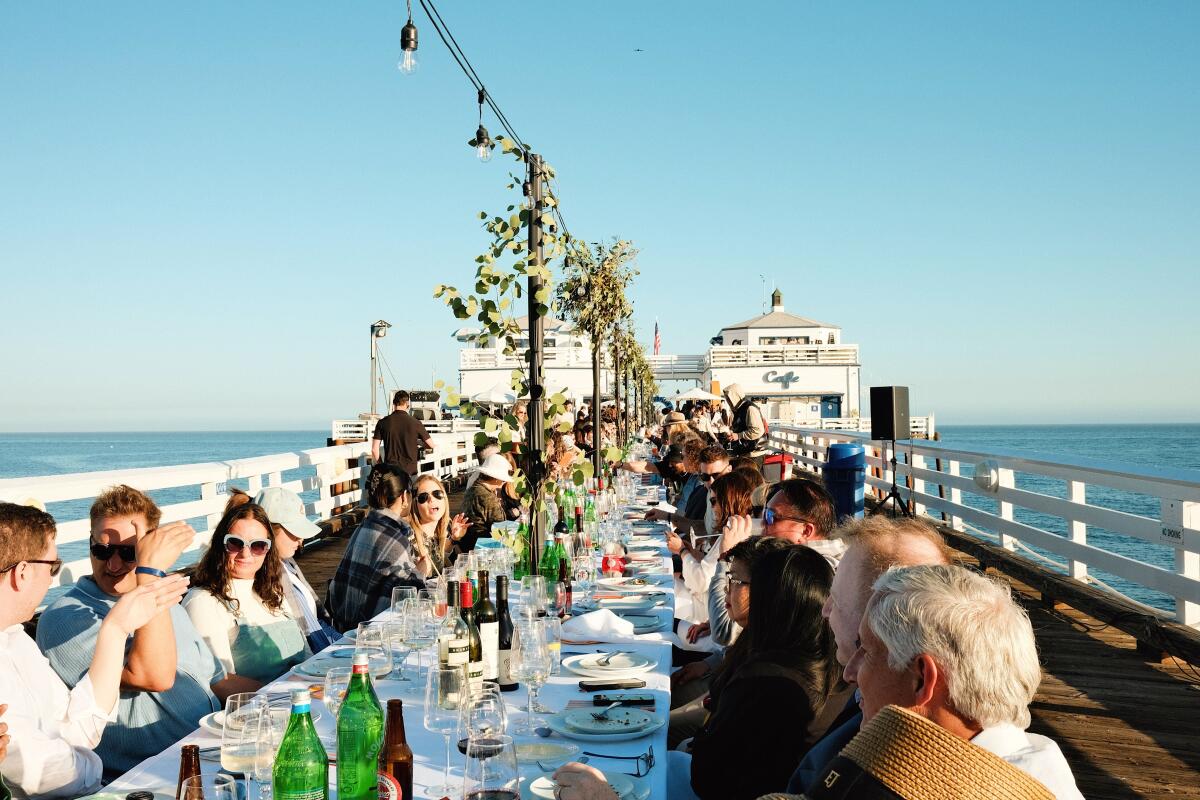
But first, a word from our visiting chefs and Aussie-turned-L.A. chef Monty Koludrovic of the soon-to-open Living Room club in Hollywood to describe some of the night’s dishes. What you have to understand is that even though guests paid tasting-menu prices for the dinner, Niland and Barrett are not the kind of chefs to pile on the caviar and Wagyu and call it a night. These are chefs who take sustainability and closed-loop food systems seriously.
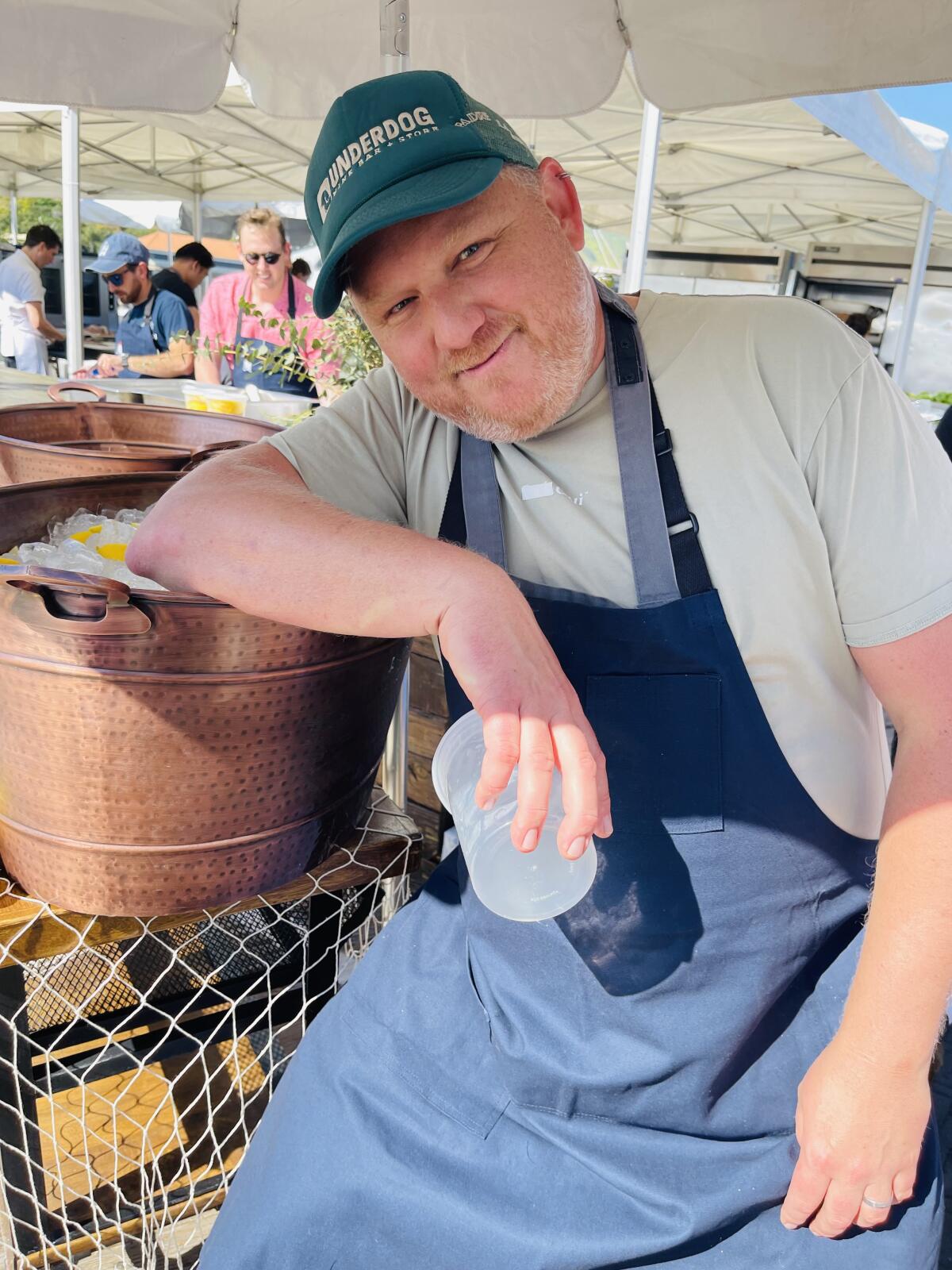
Niland, who many of us have gotten to know through his books — his first, “The Whole Fish Cookbook,” won the 2020 James Beard Award for Book of the Year — is recognized for applying a meat butcher’s nose-to-tail approach to fish. Some call it “scale to tail.” In fact, his latest book is called “Fish Butchery,” which is also the name of his fish and seafood shop in the Sydney suburb of Waterloo, about two and a half miles from his main restaurant, Saint Peter, in Paddington. In October, he was named chef of the year by the Sydney Morning Herald Good Food Guide.
“The work of a meat butcher for centuries has always been to generate value from the entirety of an animal, but yet somehow there’s a disconnect for fish,” he tells the guests on the pier. “It’s very much, ‘I just want to eat the center cut of the filet.’ ”
At his Fish Butchery shop, much of the fish is kept whole on the bone until it is sliced for the customer — some pieces in the case at first glance look like rack of lamb or pork shoulder. And he offers things like fish sausage and fish bacon as well as fish liver pâté.
“You can cherry-pick centuries of information around meat-based preparations,” he says, “and then attach them to fish. So then you’re removing some of the fear around things.”
Barrett, who was named chef of the year in October by Melbourne newspaper the Age, and has a new cookbook called “Sustain,” has worked in no-waste and low-waste restaurants throughout her career.
Which may be why, though she is at the top of her game as a chef, she is about to close her restaurant Little Pickett, located in a lawn bowling club in Lorne, some two hours outside Melbourne. She wants to devote her time for a while to two projects with the goal of reducing food waste. A meat pie company using, she says, “the massive population” of venison, “an introduced species” in Australia that the government spends millions culling. Another project she’s developing aims to reduce bread waste and help alleviate hunger around the world.
In explaining her mission on the pier, Barrett also talked about why as a low-waste chef she is not a vegetarian.
“When I think about food, it’s about ecosystems and closed-loop systems. That’s why I’m not a vegetarian,” she says. “Wild food has been a really big part of our lives. The government [has] professional shooters shoot deer and quite often leave them in our national parks, [making] the wild dog population worse. And if they’re not shooting deer, they poison them and that affects native wildlife because they tend to eat those poisoned venison. So we are trying to use the deer as a protein source.”
The venison kofta appetizer on the pier, for instance, reflects her passion. There is also Hiramasa kingfish, a species used often in Australia, served by Niland with a salad of salt-and-vinegar pine nuts that almost have the texture of lentils tossed with fig leaves in a native pepper vinaigrette. Lobster bouillabaisse pie is served family style with the head and tail of an entire lobster rising from the pot’s edges. Roasted carrots from Weiser Family Farms come on the side.
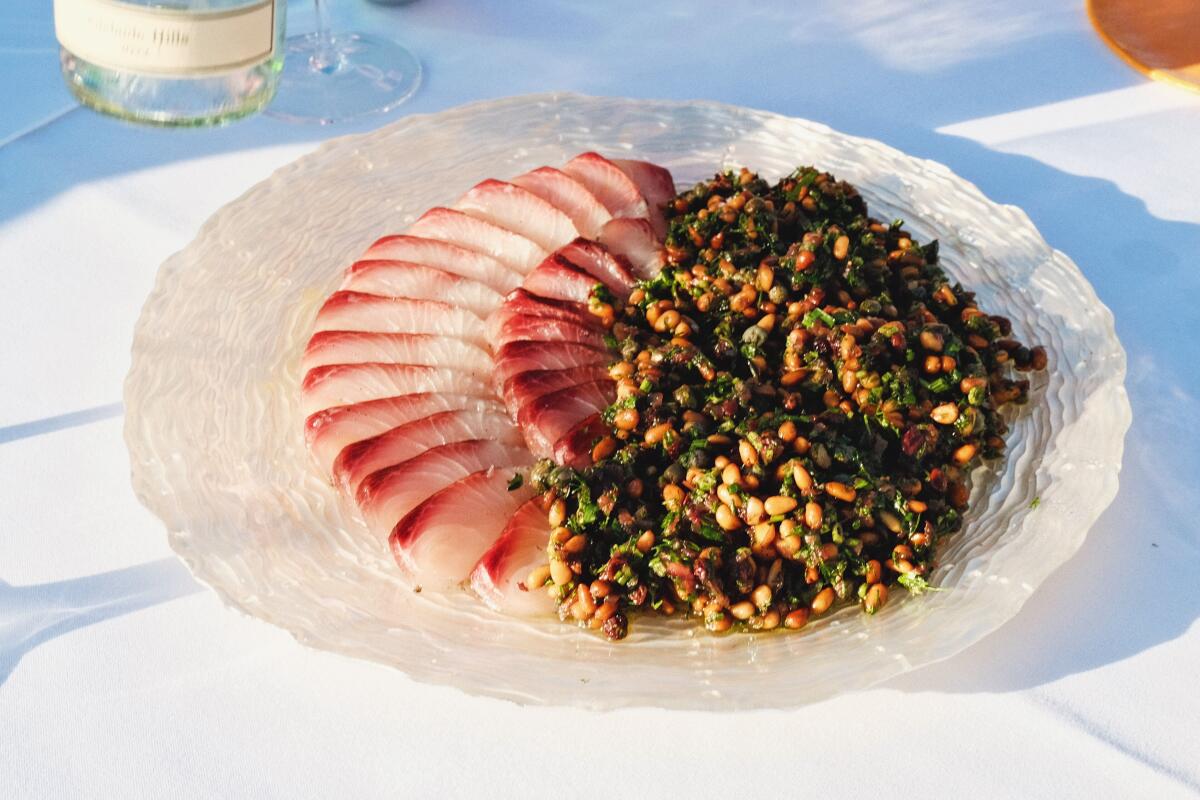
“You know some of the items we have on the menu tonight are not only whole fish,” Barrett says, “but we’ve utilized parts of other animals that aren’t so common but are just as delicious. I hope you all try the black pudding or blood sausage, which is made from pig’s blood but also has incredible local pork in it and lots of spices.” The sausage is wrapped with herbs in lettuce leaves and dipped in a Thai-style finger lime nahm jim sauce.
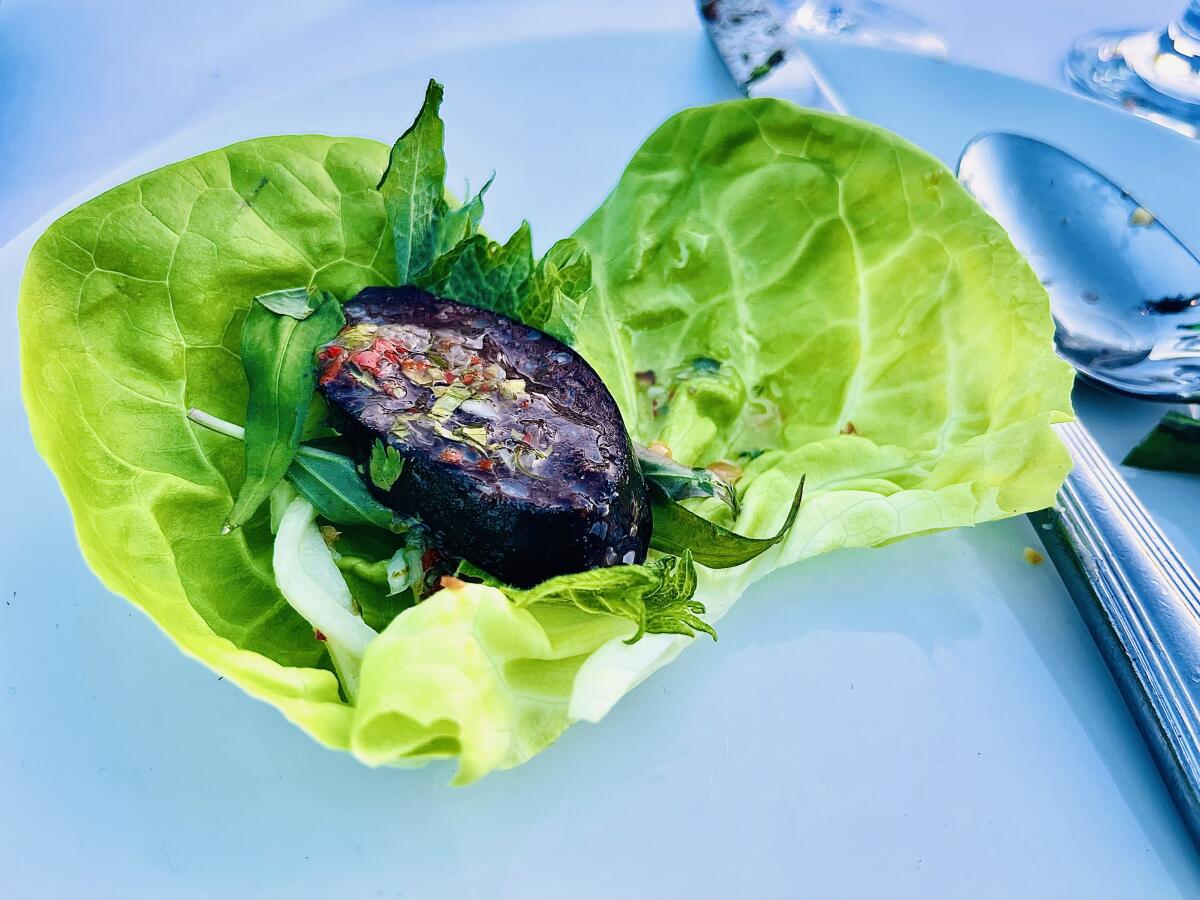
“It’s paired with prawns that have been grown here in L.A., which is just incredible,” she says about the shrimp grown at TransparentSea Farm in Downey. “I wish we had that at home. You know, in Australia prawns are such a big part of our persona.”
“Shrimp on the barbie,” Niland wryly interjects.
And then Niland brings up dessert, which at his Sydney restaurant can often mean fish-eye ice cream.
“The vitreous humor of an eye has similar properties to that of an egg yolk,” he explains. “And so all of a sudden you’ve got fish ice cream.”
But since the plant-based ice cream of the evening is from the West Hollywood shop Awan, created by Australia native Zen Ong, Niland has come up with a different way to show the egg-yolk like properties of fish eyes.
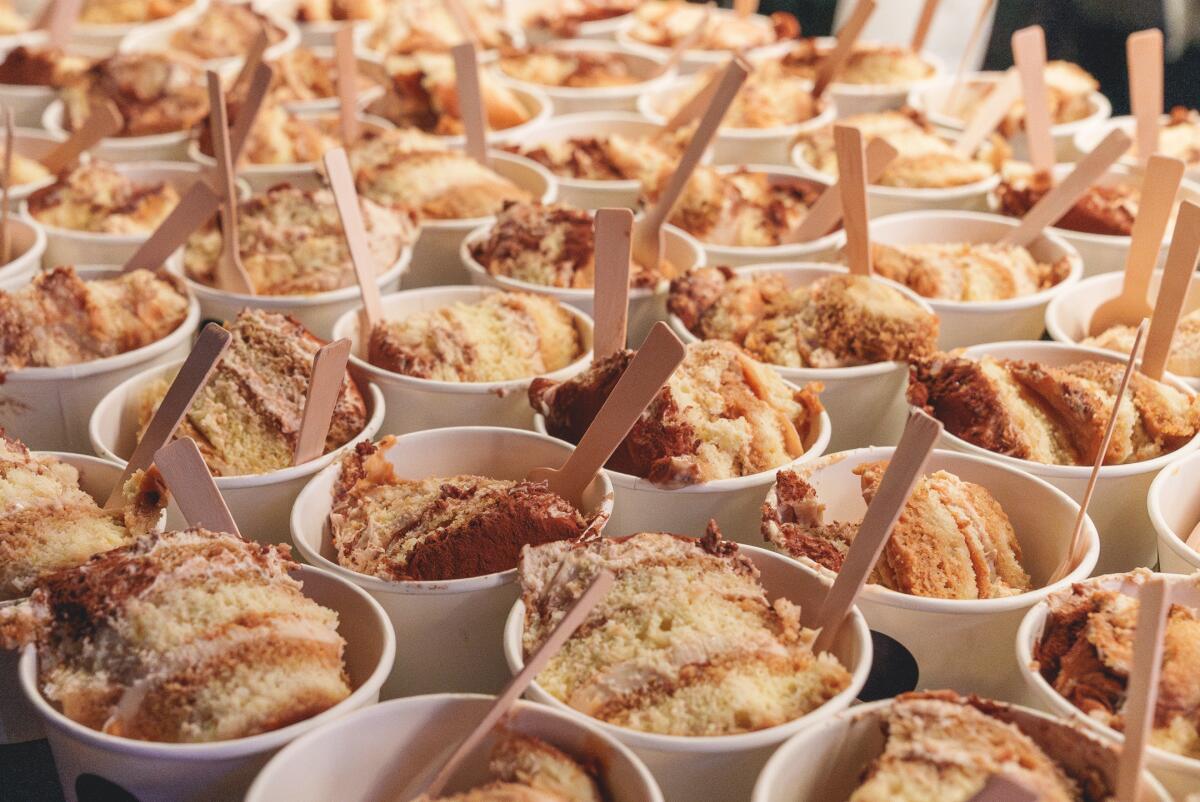
“Tonight, you’re having a tiramisu that’s made up pretty well, mostly of fish,” he says before quickly adding a disclaimer. “At no point do I ever want it to taste like fish. The ambition is not to make you taste something that bothers you or inflicts an experience on you. It’s just to intelligently use something that otherwise would have ended up in the bin.
“And the only way that you can do this in a restaurant setting is to get ‘the rungs on the board,’ ” he says, using the Australian saying. “You have to get trust, you have to get enrollment. And you have to prove that it’s delicious. That it looks wonderful. And that you’ll do it again tomorrow.”
Niland was right. The tiramisu, not fishy in the least, was sweet, tender ... and yes, delicious.
You’re reading Tasting Notes
Our L.A. Times restaurant experts share insights and off-the-cuff takes on where they’re eating right now.
You may occasionally receive promotional content from the Los Angeles Times.
Cookbook season

In Sunday’s cooking newsletter — if you don’t receive it, you can sign up here — deputy Food editor Betty Hallock gives a full run-down of our ongoing spring cookbook coverage, with a special edition running in Sunday’s Weekend section ahead of the L.A. Times Festival of Books next weekend. We’ll have a cooking stage, panels and food authors doing book signings at our L.A. Times x Now Serving booth. Hallock also adds some of her own picks for five L.A. cookbooks she loves.
Among the authors in our special coverage are José Andrés, Joan Nathan, “Koshersoul‘s” Michael Twitty, Kismet chef-co-owners Sara Kramer and Sarah Hymanson, “SalviSoul‘s” Karla Vasquez, “The Mythical Cookbook‘s” Josh Scherer, “Niçoise’s” Rosa Jackson and Jenn Harris’ latest edition of her series ”The Crawl” with Grammy-winning producer Benny Blanco, who has a soon-to-be-published cookbook called “Open Wide.”
Also ...
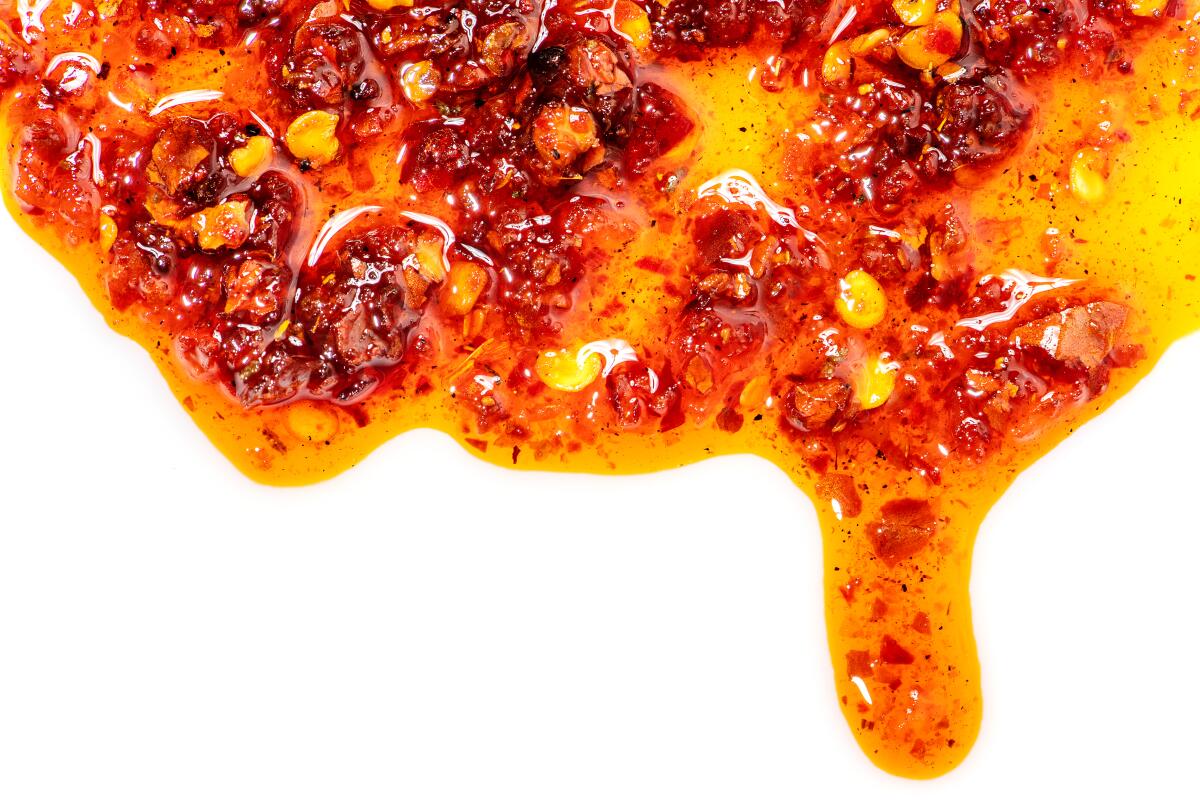
- Jenn Harris, with an assist from Betty Hallock, gets a Momofuku spokesperson to respond to the “trademark bully” backlash that emerged with the news that chef David Chang‘s company wants a trademark for the phrase “chili crunch.” In addition, we hear from Fly by Jing‘s Jin Gao, who dropped her second bid to trademark the term “chili crisp” last week.
- Harris also weighs in on the “pastry abomination” that is the flat croissant ... and is strangely drawn to the cartoonish 2-D treat.
- Op-ed contributor Karen Stabiner doesn’t like the love L.A. is showing for “fluffy” Courage Bagels.
- Summer Lin reports that the security fee at downtown L.A.’s rooftop spot Perch is raising eyebrows.
- And if you want more chile talk, on our Three Ingredients podcast Ruth Reichl, Nancy Silverton and I ask if sriracha has become an old lady condiment.
Eat your way across L.A.
Like what you're reading? Sign up to get it in your inbox every week.
You may occasionally receive promotional content from the Los Angeles Times.

Eat your way across L.A.
Get our weekly Tasting Notes newsletter for reviews, news and more.
You may occasionally receive promotional content from the Los Angeles Times.




